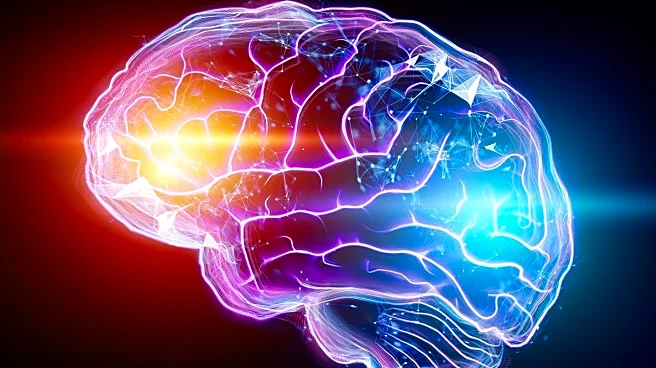What is the story about?
What's Happening?
A recent study published in Nature has identified a novel thermogenic mechanism in mice that operates independently of the uncoupling protein 1 (UCP1). Traditionally, brown and beige adipocytes are known to undergo non-shivering thermogenesis primarily through UCP1. However, the study reveals that UCP1 ablation does not lead to obesity in mice, suggesting alternative thermogenic pathways. The research highlights the role of monomethyl branched-chain fatty acids (mmBCFAs) metabolism in peroxisomes as a key component of this mechanism. Cold exposure in wild-type mice was found to increase the expression of FASN, an enzyme crucial for mmBCFA synthesis, in brown adipose tissue (BAT). Additionally, thermogenic stimuli enhanced the localization of FASN to peroxisomal membranes. Mice with a brown adipocyte-specific knockout of Fasn (Fasn-BKO) exhibited significantly reduced core body temperature and energy expenditure compared to wild-type mice, confirming the necessity of FASN for BAT thermogenesis.
Why It's Important?
The discovery of a UCP1-independent thermogenic mechanism is significant as it expands the understanding of energy expenditure and thermogenesis in mammals. This could have implications for developing new strategies to combat obesity and metabolic disorders. By identifying alternative pathways for thermogenesis, researchers can explore novel therapeutic targets that may enhance energy expenditure without relying solely on UCP1. This could benefit individuals with conditions where traditional thermogenic mechanisms are impaired. Furthermore, understanding the role of mmBCFAs and FASN in thermogenesis could lead to advancements in metabolic research and potential treatments for obesity-related diseases.
What's Next?
Future research may focus on further elucidating the molecular pathways involved in this UCP1-independent thermogenic mechanism. Scientists could investigate the potential for manipulating mmBCFA metabolism to enhance thermogenesis and energy expenditure in humans. Additionally, exploring the role of FASN in other tissues and its broader implications in metabolism could provide insights into new therapeutic approaches. Researchers may also study the interaction between this mechanism and other metabolic processes to develop comprehensive strategies for managing obesity and metabolic disorders.
Beyond the Headlines
The identification of alternative thermogenic mechanisms raises questions about the evolutionary adaptations of mammals to cold environments. Understanding these mechanisms could provide insights into how different species have evolved to maintain energy balance and body temperature. Moreover, the study highlights the complexity of metabolic processes and the potential for discovering new pathways that could be leveraged for therapeutic purposes. Ethical considerations may arise regarding the manipulation of metabolic pathways in humans, necessitating careful evaluation of potential risks and benefits.
AI Generated Content
Do you find this article useful?













